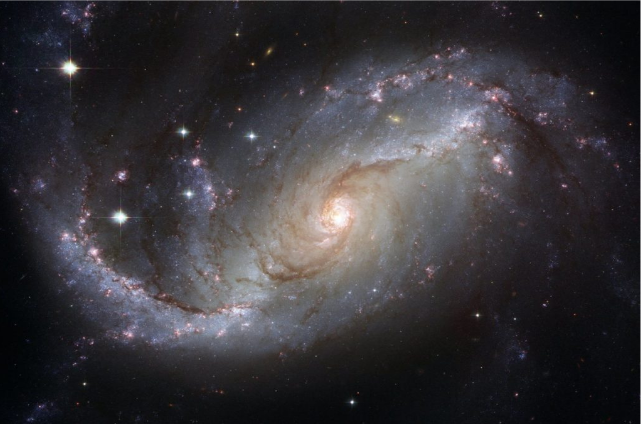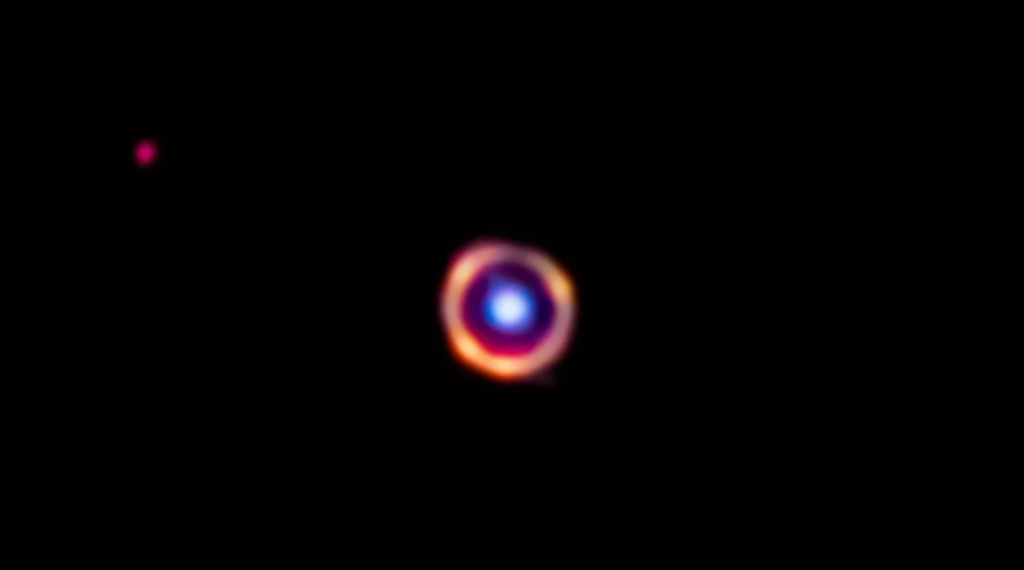From the Big Bang to the formation of the first galaxies and beyond, our universe emerged from a colossal explosion known as the, well – Big Bang, which occurred nearly 13.8 billion years ago. However, is it really that straightforward? Light, which enables us to see, only existed a few hundred million years after the Big Bang. So, what was the source of the first light to travel through the universe? When were the stars that light up the night sky initially formed? The James Webb Space Telescope will help us answer these questions.
Named after former NASA administrator James Webb, the telescope is a large infrared instrument, advancing beyond the capabilities of the Hubble Telescope. A collaboration between NASA, the European Space Agency, and the Canadian Space Agency, Webb explores questions leading to the history of our universe. It features a 6.5-metre primary mirror and was launched on an Ariane 5 rocket from French Guiana on 25 December 2021 (NASA, 2021).

Named after former NASA administrator James Webb, the telescope will be a large infrared instrument, advancing beyond the capabilities of the Hubble Telescope. A collaboration between NASA, the European Space Agency, and the Canadian Space Agency, Webb will explore questions leading to the history of our universe. It features a 6.5-metre primary mirror, and the launch is set for an Ariane 5 rocket in French Guiana in 2021.
What Makes Webb Innovative?
Webb is equipped with an ultra-lightweight beryllium mirror comprising 18 separate segments. After the launch, the mirrors are designed to unfold and adjust into shape. The most notable feature is a five-layer sunshield the size of a tennis court, which reduces the effect of the sun’s heat by up to a million times. It includes NIRSpec, an instrument with programmable microshutters that can simultaneously observe up to 100 objects. Webb also carries a cryocooler to cool the mid-infrared detectors of MIRI to 7K.
Our Cosmic History: Galaxies

Galaxies are clusters of stars present throughout the universe. Our solar system is a speck in the Milky Way galaxy. The presence of galaxies indicates the arrangement of matter on large scales in the universe. Many different processes took place over several billion years, including the collisions of many smaller galaxies, which led to the formation of the galaxies we now know.
How did galaxies initially come into existence? What is the significance of the black holes present at their centres? The James Webb Space Telescope has been designed with such questions in mind.
Studying Exoplanets and the Potential for Life
Webb will study exoplanets and the potential for life beyond Earth. It will use spectroscopy to analyse an exoplanet’s atmosphere based on its image. Mars rovers and landers have collected information over time, and Webb will act as a tool to authenticate these findings. Webb will also cover small celestial bodies such as asteroids, comets, and dwarf planets like Pluto.
What Do You Understand by ‘Infrared Telescope’?
Imagine your hand inside a rubbish bag. You won’t be able to see it with your eyes. What if you try to see your hand through an infrared camera? The camera will detect the warmth of your hand, and your hand will now be visible.

This feature of the infrared Webb Telescope will help astronomers look beyond dusty clouds and study the formation of stars. Since the dust makes it difficult to study such regions, infrared wavelengths are required.
Comparison Between James Webb and Hubble Space Telescopes
While Hubble can focus on a small region of the infrared spectrum and the ultraviolet region, JWST will not be able to see ultraviolet light like Hubble. JWST’s sunshield measures approximately 22 m by 12 m, while Hubble’s length is 13.2 m, and its maximum diameter is 4.2 m. Unlike Hubble, which orbits Earth at a distance of 570 km, JWST will not orbit Earth but will be positioned 1.5 million km away at the L2 point.
A Time Machine

When mentioning very distant objects, Einstein’s Theory of Relativity plays a significant role. Some stars we see through our telescopes appear as they did a billion years ago. Their light is reaching us now, and by the time their light reaches us, the colour of the light undergoes something called a redshift. Due to this phenomenon, the light initially emitted by the stars and galaxies as ultraviolet or visible light gets shifted towards the infrared region by the time it reaches us. The higher the redshift, the farther away the object is. To sum it up, a powerful infrared telescope is required to see what can be called the first stars and galaxies, and that is where the James Webb Space Telescope will play its part. JWST will act as a time machine and help astronomers study the initial stages of the formation of stars and galaxies after the Big Bang.
Recent Discoveries and Observations
Since its launch in 2021, Webb has procured some of the best space images captured to date. However, the James Webb Space Telescope is more than just beautiful pictures of space; rather, it is a scientific instrument that has helped humanity peer more clearly into the cosmos than ever before. President Joe Biden released the first full-colour images on 12 July 2022, marking the beginnings of many scientific observations made by the telescope.
Webb’s First Deep Field
Webb’s first deep field image covers a tiny area of space from the southern hemisphere, featuring a galaxy cluster in the constellation of Volans. It is by far the highest-resolution image of early space taken. Additionally, other releases at this time included: the Carina Nebula, a large, complex area of bright and dark nebulosity in the star-forming region called NGC 3324. Due to its formations, it is sometimes referred to as the cosmic cliffs and is 8,500 light years away from Earth.

Carina Nebula
It is a large complex, area of bright and dark nebulosity, in the star forming region called NGC 3324. It is sometimes referred to as cosmic-cliffs due to its formations and is 8500 light years away from earth.

WASP-96b – The cloudless planet has water
It includes an analysis of the atmosphere with the evidence of water around Jupiter orbiting a distant star 1120 light-years from Earth.

Stephan’s Quintet
One of the most marvellous displays of the sheer power space and time carries is Stephan’s Quintet. It is a breathtaking visual display of five galaxies with colliding gas and dust clouds creating new stars almost all of which are 290 million light-years away from Earth.

A mosaic of galaxies
Within a short period, Webb captured several high-redshift, luminous galaxies. These are some of the most ancient galaxies, formed between 235 million and 280 million years after the Big Bang. On 17 August 2022, Webb furthered its prowess in finding ancient galaxies by providing images of a giant mosaic. This image consolidated 690 frames taken by JWST’s Near Infrared Camera (NIRCam), showcasing some of the earliest galaxies ever formed (NASA, 2022).

Organic molecules in SPT0418-47
In September 2022, astronomers reported the discovery of some of the largest ancient galaxies ever observed, which shed new light on our understanding of the universe’s early days. Scientists suggest that black holes play a pivotal role in the formation and evolution of these massive galaxies, pointing to a complex interplay between black hole growth and galaxy development.

In July 2023, researchers using the James Webb Space Telescope announced a groundbreaking discovery of organic molecules in the distant galaxy SPT0418-47, located nearly 12 billion light-years away. This finding is significant as it suggests the presence of complex chemical processes in the early universe, potentially hinting at the building blocks of life in environments far removed from our own galaxy.”
It’s beginning to look a lot like cosmos
Hold on to your Christmas cards. In December 2023, NASA released Christmas holiday-related images which included the Christmas Tree Galaxy Cluster suggesting the Universe celebrating with us.

IZS7, we have your location, over and out.
As of the latest on the James Webb Space Telescope, on 19th May 2024, discovered the farthest known black hole merger. Occurring within the galaxy system ZS7, it is suggestive of fast growth rates for major black holes through mergers in the young Universe.

The James Webb Space Telescope stands as a monumental achievement in astronomical science, offering unprecedented insights into the early universe, the formation of stars and galaxies, and the potential for life on exoplanets. Its innovative design and powerful instruments make it a crucial tool for answering some of the most profound questions about our cosmos. As we continue to explore and make new discoveries, JWST will reshape our understanding of the universe for years to come.